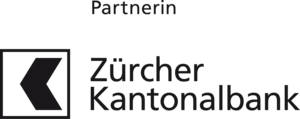Hannah Weiner
Hannah Weiner’s poetry captures language where it happens, by listening or looking. With her roots in the 1960s avant-garde of New York, she thus transformed the ways language appears. Her art could be called poetry or lyrics; her works are as much performances as images.
Hannah Weiner was born in Providence, Rhode Island, in 1928. She studied literature at the renowned Radcliffe College, Massachusetts, and worked as a reader for various poetry magazines. When she became active as a poet in the 1960s in the immediate surroundings of the New York art and performance scene, she had already established a professional position as a designer of lingerie. Her first attempts at writing, of which her cycle of poems The Magritte Poems (1963) has survived, are clearly influenced in their playful dealings with the structure and figurative power of language by the New York Poetry School, which she encountered at the New School for Social Research with Kenneth Koch, Ted Barrigan and others. Due to her association with the later Pop artist, Marjorie Strider, and the performance artist, Carolee Schneemann she was integrated into the New York art scene no less as a designer than as a poet.
In 1968 came Weiner‘s first Code Poems: adapting the International Code of Signals – a signal system developed for communications at sea – she composed dialogue scripts, absurd and humorous “poems”, which were performed in various constellations and with changing casts. In these scripts she experimented with new methods of communication – visual, auditory and body-related. When the Code Poems were published in 1982 a rotatable mandala was attached to the cover of the book, encouraging readers to make their own experiments with poetry: “Where does It or You begin?”
In addition to her personal works, such as Hannah Weiner at Her Job (1969), Hannah Weiner meets Hannah Weiner (1969) and the draft (and performance) of an abstract/minimal labelling system for doorplates and doors in public places, Hannah Weiner was part of a small avant-garde group of poets, art critics and performance artists who organized poetry events to bring poetry “off the page” and onto the street. In the Fashion Show-Poetry Event (1969), which Weiner helped organize, Claes Oldenburg, Andy Warhol and James Lee Byars showed fashion designs. The Streetworks (1969/1970), a series of collectively conceived events and happenings in New York streets, poets, artists and the passing public were all challenged to try out poetic interaction in the immediate urban environment. In 0 to 9, a magazine edited by Vito Acconci and Bernadette Mayer, the streetwork poets found their publication outlet. In it, authors were published whose poetry moved symptomatically between (writing) process and speech deconstruction and who are still setting the style for the language-poets movement far beyond the borders of the USA.
“The words began to appear in 1972 and led to the clairvoyant journal
a three voice performance poetry book about learning,
explaining instructions and the counter voice”
(Hannah Weiner in Silent Teacher, 1993)
“I see words” – announced Hannah Weiner at the beginning of the 70s, and she withdrew her work process from social and collaborative activism to her very singular research of language in analogy to her sense ability, as well as to provoke and write down: how can one capture and copy down the language taking place around one? How react to the constant achievement of language? In answering these questions Hannah Weiner no longer made texts out of her own words but rather she intervened in the language material around her and translated it into hour-long or day-long sessions immediately from her subjective field of perception into a form of writing or imaging. Between 1971 and 1978 Weiner worked exclusively on the Clairvoyant Journals, which she published as excerpts in various sub-cultural magazines, poetry newsletters and anthologies. The Clairvoyant-Journals were followed by various book projects, including Weeks (1986), which translates the communications structure of television, and Silent Teachers (1989 – 91), in which the poems lay out clairvoyantesque dialogues with fictitious “teachers”. Apart from her work as a writer, Hannah Weiner also appeared regularly at the Poetry Center St. Marks Church and readings – for example in the legendary avant-garde broadcasting program Public Access Poetry – make clear how close her poetry is to performance. In addition, her visual and other styles of real-time transcriptions of the language taking place around her gained increasing influence as avant la letter poetry in the context of Language Poets. How difficult it remained to find a place for her work in the current genres of literature is shown by the insistent search for new terms to describe her idiosyncratic form of writing; Avant-garde Journalism (Patrick Durgin) or Large Sheet Poetry (Weiner) are some examples of that.
After her death, the reception of Hannah Weiner took place mainly in the context of disability studies, American innovative poetry (especially with a feminist perspective), and 1970s conceptual language discourse. However, especially through the communications work of Charles Bernstein, the executor of her literary heritage, and the researches of Patrick Durgin (Hannah Weiner Open House, Kenning Editions, 2007) Weiner’s work has enjoyed a major revaluation, which pays respect not only to her influence on the movement of Language Poetry (the second generation) but also to her role in the New York avant-garde performance scene.
In the exhibition at the Kunsthalle Zürich, Hannah Weiner‘s work is being shown comprehensively for the first time in the context of contemporary art. While today strategies and positions are being sought for the new communications media, long before our time Hannah Weiner demonstrated possibilities for appropriating language in transformation and giving it new settings.
Curated by Franziska Glozer








